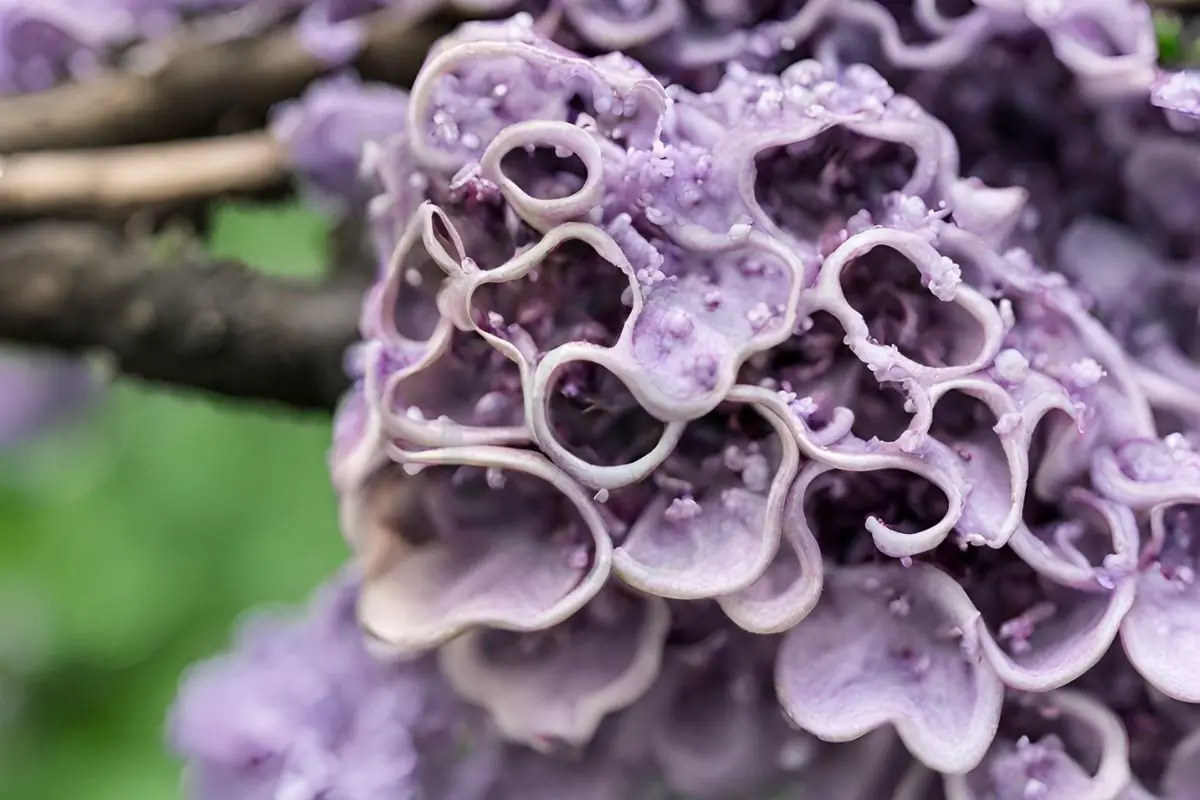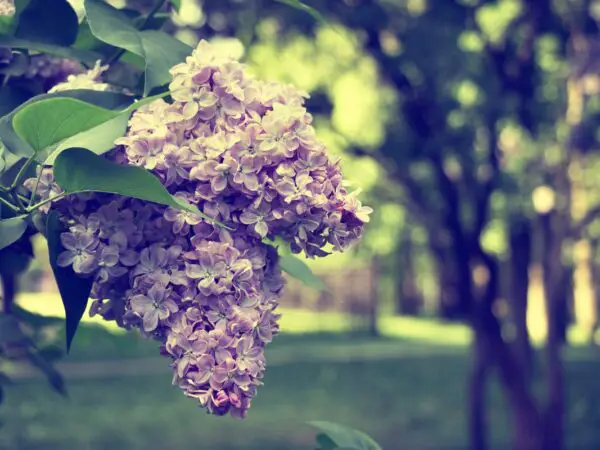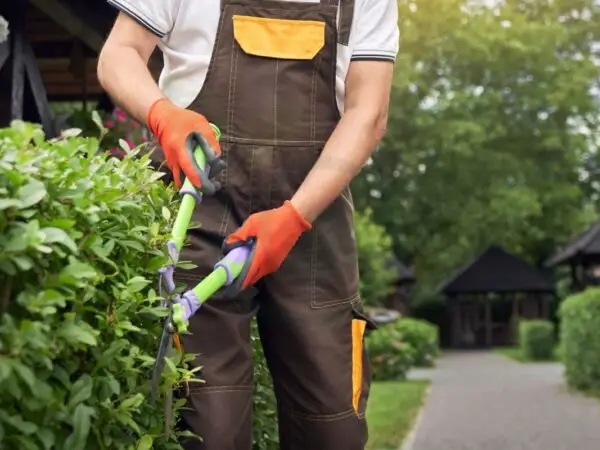If you're dealing with fungal disease caused by plant pathogens on your lilac bush, fret not! We've got you covered with effective solutions, including pest and fungicide, to restore your plant's health in horticulture. From identifying the type of fungus to implementing preventive measures for plant pathogens, we'll guide you through every step.
Key Takeaways
- Identify the Fungus: Learn to recognize different types of fungus that can affect lilac bushes to take appropriate action promptly.
- Maintain Lilac Health: Understand the indicators of a healthy lilac bush to prevent and address potential fungal issues effectively.
- Take Action: Implement practical solutions to combat fungus on lilac bushes, such as using fungicides or pruning affected areas.
- Prevent Future Outbreaks: Apply preventive measures like proper watering, adequate sunlight, and air circulation to keep lilacs fungus-free.
- Combat Powdery Mildew: Specifically address powdery mildew on lilacs by using fungicidal sprays and ensuring good plant hygiene.
- Care Year-Round: Follow seasonal care tips and advanced strategies to maintain healthy lilac bushes and save those already affected by fungus.
Identifying Fungus Types
Common Issues
Lilac bushes commonly face issues like powdery mildew and bacterial blight, affecting their overall health. These diseases can stunt growth and lead to wilting leaves. During summer, lilacs are vulnerable to heat stress and dehydration, impacting their ability to thrive.
Summer Challenges
Summer brings challenges such as increased humidity and warm temperatures, creating ideal conditions for fungal growth on lilac bushes. These factors can weaken the plant's immune system, making it more susceptible to diseases like powdery mildew. The intense heat during summer can also cause water stress in lilacs, leading to wilted foliage.
Powdery Mildew
Powdery mildew presents as a white, powdery substance on lilac leaves, affecting their photosynthesis process. Distinguishing powdery mildew from other fungal diseases involves looking for the characteristic white powder on both sides of the leaves. This disease weakens the plant over time, causing stunted growth and distorted foliage.
Other Fungi
Various fungi, including leaf spot and rust, can infect lilac bushes, manifesting through distinct symptoms like leaf discoloration and spots. Fungal diseases in lilacs often spread through spores carried by wind or water, posing a risk of widespread infection within the plant. Treatment options for fungal infections include pruning affected areas and applying fungicides specifically formulated for lilacs.
Understanding Lilac Health
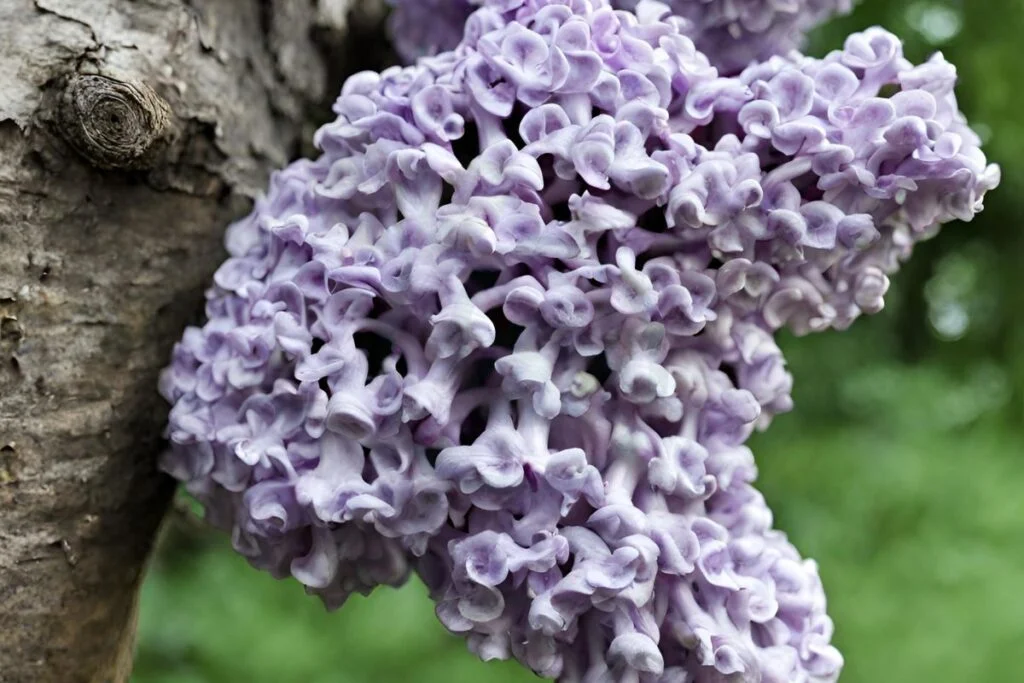
Signs of Distress
Lilac bushes show visible signs when they are in distress, such as yellowing leaves or stunted growth. Differentiate between symptoms like wilting, leaf spots, or abnormal discoloration. Recognizing early warning signs can prevent severe issues from developing.
- Wilting leaves
- Yellow or brown spots on leaves
- Abnormal discoloration of flowers
Understanding these signs helps diagnose problems early and take necessary actions to restore the lilac bush's health.
Fungus Impact
Fungus can have a detrimental impact on lilac bushes, hindering their growth and overall health. It affects the plant by causing leaf spots, wilting, and even mold growth. If left untreated, fungal infections can lead to long-term consequences like reduced flowering and weakened immunity.
- Leaf spots caused by fungal growth
- Wilting due to root rot from fungus
- Mold development on leaves and stems
Preventive measures like proper pruning, watering techniques, and soil management can help mitigate the effects of fungus on lilac bushes.
Effective Solutions
Chemical Treatments
Chemical treatments are important vectors in combating fungal diseases on a lilac bush. These solutions are effective in eradicating various types of fungi that can harm the plant. Applying chemical treatments correctly is crucial for optimal results.
Pros:
-
Rapid action against fungal infections.
-
Wide availability in stores for easy purchase.
-
Cons:
-
Chemicals may have negative effects on beneficial insects.
-
Overuse can lead to resistance in fungi.
-
When dealing with fungal diseases, understanding the different chemical treatment options available is essential. By using these vectors, you can effectively address the issue and protect your lilac bush from further damage.
Organic Remedies
Organic remedies serve as important vectors for those looking to treat fungal infections naturally. These solutions provide a safe and environmentally friendly way to combat lilac diseases. The benefits of using organic remedies include promoting overall plant health and reducing chemical exposure.
Benefits of organic remedies:
-
Environmentally friendly.
-
Safe for beneficial insects.
-
Promotes long-term plant health.
-
Examples of organic remedies:
-
Neem oil.
-
Baking soda spray.
-
Garlic spray.
-
Organic remedies offer a sustainable approach to managing fungal infections on lilac bushes while minimizing harm to the environment. By opting for these natural solutions, you can effectively address fungal issues without compromising the health of your plants.
Preventive Measures
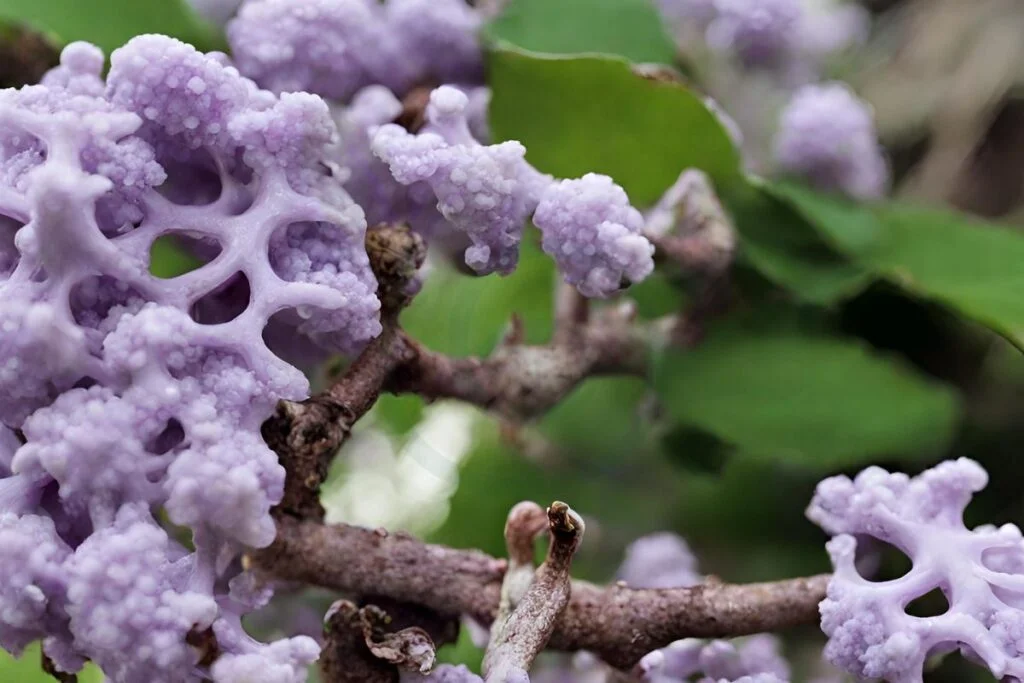
Cultural Practices
Cultural practices play a vital role in preventing fungal diseases on lilac bushes. By implementing proper care routines, such as regular watering and adequate sunlight exposure, you can enhance the overall health of your lilacs. These practices not only strengthen the plant but also help it resist fungal infections more effectively.
Understanding the importance of maintenance is crucial. Regularly removing dead or diseased branches and ensuring proper spacing between plants can significantly reduce the risk of fungal growth. By fostering a healthy environment through cultural practices, you create a stronger defense mechanism against potential infections.
Exploring how cultural practices can promote lilac health reveals the significant impact they have on disease prevention. Techniques like proper pruning, adequate watering, and appropriate fertilization contribute to a robust plant immune system. By incorporating these practices into your routine, you actively protect your lilac bushes from harmful fungi.
Proper Pruning
Pruning is essential for preventing diseases on lilac bushes as it helps eliminate infected branches and improve airflow within the plant. Learning about the significance of pruning enables you to identify and remove diseased parts promptly, reducing the spread of fungal infections. Proper pruning techniques involve making clean cuts at an angle to prevent water accumulation and subsequent fungal growth.
Understanding how pruning can improve airflow and growth emphasizes its role in maintaining healthy lilacs. By trimming overcrowded branches and allowing sunlight to reach all parts of the plant, you create an environment that inhibits fungal development. Adequate airflow reduces moisture retention, creating unfavorable conditions for fungi to thrive.
Mulching Techniques
Effective mulching techniques are key in preventing fungal infections on lilac bushes. Mulch acts as a protective barrier, regulating soil temperature and moisture levels to inhibit fungal growth. Learning how to properly apply mulch around lilac bushes involves spreading a layer around the base of the plant while avoiding direct contact with stems to prevent rotting.
Understanding the benefits of mulch in preventing fungal infections highlights its role as a preventive measure against diseases. Mulch helps retain soil moisture, suppresses weed growth, and provides insulation during extreme temperatures—all factors that contribute to maintaining optimal conditions for lilac health.
Addressing Powdery Mildew
Identification Tips
Spotting specific fungal pathogens on your lilac bush is crucial for effective treatment. Look for white powdery patches on leaves, stems, and flowers. This indicates powdery mildew, a common fungal disease affecting lilacs.
To accurately identify the fungus, observe the distinctive white powdery coating that resembles flour dusted on plant surfaces. Check for wrinkled or distorted leaves as early signs of infection.
Distinguishing between different diseases is essential. While powdery mildew appears as white patches, other fungal infections may cause black spots or yellowing leaves. Understanding these differences helps in selecting the appropriate treatment.
Specific Treatments
For combating powdery mildew, consider targeted treatments like neem oil sprays or sulfur-based fungicides. These options effectively combat the fungal infection without harming the lilac bush.
Treatment options vary based on the type of pathogen present. If the infection persists despite initial treatments, consult with a local garden center or extension office for tailored advice.
Precise treatments are vital for eradicating the fungus and preventing its recurrence. Follow application instructions carefully to ensure thorough coverage and maximum effectiveness.
Saving Affected Lilacs
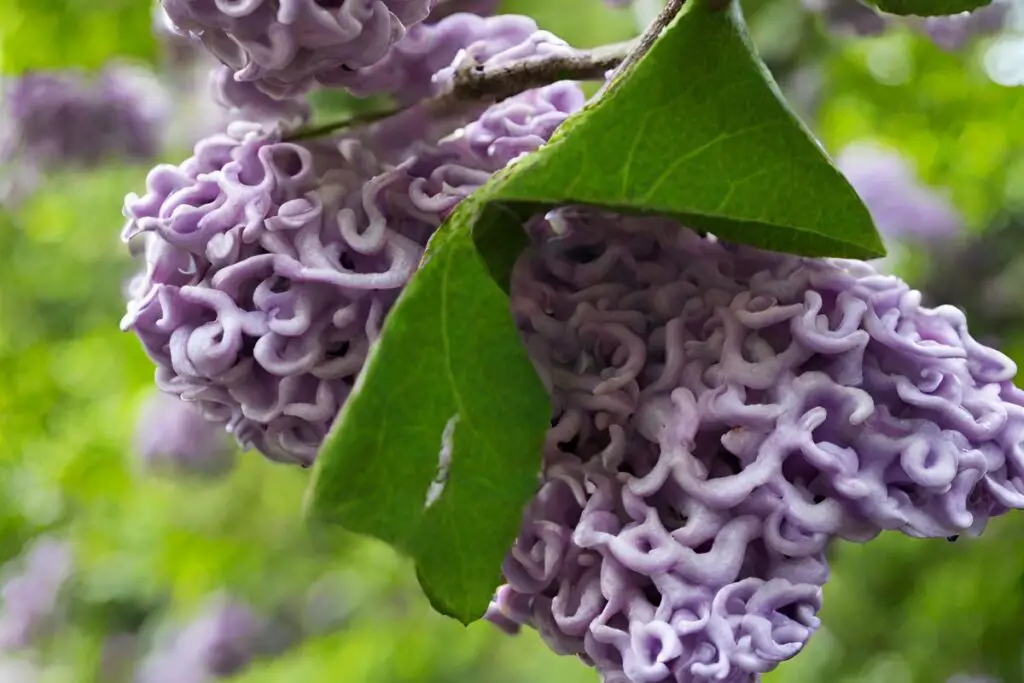
Recovery Steps
To help lilac bushes recover from infections, it is essential to prune affected areas and remove any diseased leaves. Apply fungicides specifically designed for fungal diseases on lilacs. Ensure proper watering and sunlight exposure to boost recovery.
-
Trim affected parts
-
Apply suitable fungicides
-
Provide adequate water and sunlight
Understanding the recovery process after treating fungal diseases involves closely monitoring the plant's response. Look for new growth, which indicates the effectiveness of treatment. Regularly inspect the lilac bush for any signs of recurring infections.
Monitoring Progress
Monitoring progress post-treatment is crucial to ensure the long-term health of lilac bushes. Keep a close eye on any changes in leaf color or texture, as these can indicate improvement or further issues. Look for resilience in new growth as a positive sign of recovery.
-
Check for changes in leaf appearance
-
Monitor new growth development
-
Seek signs of resilience in the plant
Understanding the signs of successful recovery involves observing how the lilac bush responds to treatment over time. Look for vibrant foliage, increased flower production, and overall vigorous growth as indicators of a healthy, recovered plant.
Seasonal Care Tips
Summer Maintenance
Maintaining your lilac bush during the summer months is crucial for its health. Regular watering and pruning are essential tasks. Ensure to remove any dead or diseased branches to prevent fungal spread.
To keep your lilac bush healthy in summer, prune it after flowering to encourage new growth. Deadhead faded blooms regularly to promote continuous blooming. These practices help prevent fungus from taking hold.
-
Regularly inspect your lilac bush for signs of pests or diseases.
-
Prune back any dead or damaged branches to maintain plant vigor.
-
Mulch around the base of the bush to retain moisture and deter weed growth.
Watering Practices
Proper watering is key to preventing fungal diseases on your lilac bush. Avoid overwatering, as this can lead to root rot and fungal issues. Ensure the soil is well-drained to prevent waterlogging.
When watering your lilac bush, aim for deep, infrequent watering rather than frequent shallow watering. This encourages deep root growth and helps the plant withstand dry spells. Overwatering can create ideal conditions for fungal growth.
-
Water your lilac bush deeply once a week during dry spells.
-
Check the soil moisture level before watering by inserting your finger into the soil.
-
Water at the base of the plant to avoid wetting the foliage, which can promote fungal diseases.
Advanced Care Strategies
Soil Health
l health plays a crucial role in preventing fungal infections on lilac bushes. Poor soil quality can negatively impact lilac growth, making them more susceptible to diseases. To promote healthy soil conditions, consider incorporating organic matter like compost or manure to improve soil structure.
List:
-
Organic matter improves soil health
-
Compost and manure enhance soil structure
When it comes to lilacs, adequate sunlight exposure is essential for their overall health. Sunlight levels directly impact the well-being of lilac bushes, influencing their growth and blooming potential. Understanding the optimal sunlight requirements for lilacs can help maintain their health and vigor.
Sunlight Exposure
Adequate sunlight exposure is crucial for the prosperity of lilac bushes. Insufficient sunlight can weaken the plants, making them more prone to diseases and pests. Ensure that your lilacs receive at least six hours of direct sunlight daily for optimal growth.
List:
-
Direct sunlight boosts plant vitality
-
Six hours of sunlight daily is ideal
Meet the Author
Expertise Sharing
Sharing gardening expertise benefits both beginners and experienced gardeners in cultivating healthy lilac bushes. By exchanging tips and tricks, individuals can enhance their knowledge on lilac care. This sharing of expertise fosters a sense of community among gardeners, creating a supportive environment for learning.
Gardening enthusiasts can exchange insights on pruning techniques, soil requirements, watering schedules, and pest control methods specific to lilac bushes. Through online forums, local gardening clubs, or workshops, individuals can gather valuable information to ensure the optimal growth of their lilacs. The collective wisdom shared through these interactions enhances the overall health and beauty of gardens within the community.
Engaging in expertise sharing not only benefits individual gardeners but also contributes to the broader gardening community. By spreading knowledge about lilac care practices, enthusiasts can promote sustainable gardening methods and preserve the beauty of these beloved flowers for future generations. This collaborative effort strengthens the bond among gardeners and fosters a culture of continuous learning and improvement.
Gardening Passion
The passion for gardening drives enthusiasts to dedicate time and effort to nurture their plants, including delicate lilac bushes. Cultivating these flowering shrubs requires patience, attention to detail, and a deep love for nature's beauty. Gardeners who are passionate about their craft find joy in witnessing the growth and blooming of their lilacs throughout the seasons.
Nurturing lilac bushes involves tasks such as regular watering, pruning, fertilizing, and monitoring for pests or diseases. Gardeners pour their passion into each aspect of care, ensuring that their plants thrive and flourish. The satisfaction derived from seeing healthy lilacs bloom with vibrant colors is a rewarding experience that fuels the passion for gardening even further.
The process of tending to lilac bushes allows enthusiasts to connect with nature on a profound level, fostering a sense of tranquility and fulfillment. The dedication required to maintain beautiful gardens reflects the deep-rooted passion that drives individuals to create thriving outdoor spaces filled with natural beauty.
Closing Thoughts
By identifying various fungus types, understanding lilac health, and implementing effective solutions and preventive measures, you can combat issues like powdery mildew and save your affected lilacs. Seasonal care tips and advanced strategies offer a holistic approach to maintaining healthy lilac bushes. Remember, a proactive stance is key to preserving the vibrancy of your garden and ensuring the longevity of your lilacs.
Take action today by applying the knowledge gained from this article to safeguard your lilac bushes against fungal threats. Share these insights with fellow gardening enthusiasts to create a community dedicated to nurturing thriving gardens. Your commitment to implementing these practices will not only enhance the beauty of your outdoor space but also contribute to the overall well-being of your beloved lilac bushes.
Frequently Asked Questions
How can I identify the type of fungus affecting my lilac bush?
To identify the type of fungus on your lilac bush, look for specific characteristics such as color, texture, and pattern on the leaves or stems. You may also consult a local garden center or extension service for expert advice.
What are some effective solutions to treat fungus on a lilac bush?
Effective solutions to treat fungus on a lilac bush include using fungicidal sprays, improving air circulation around the plant, removing infected plant parts, and ensuring proper watering practices. Follow product instructions carefully for best results.
What preventive measures can I take to protect my lilac bush from fungus?
Preventive measures to protect your lilac bush from fungus include planting in well-draining soil, avoiding overhead watering, pruning for good airflow, and applying a fungicide before symptoms appear. Regularly inspect your plants for early signs of disease.
How do I address powdery mildew on my lilacs?
To address powdery mildew on lilacs, you can use natural remedies like neem oil or baking soda spray. Prune affected areas, ensure good air circulation, and avoid overhead watering. Consider applying fungicides if the infection is severe.
What are some seasonal care tips for maintaining healthy lilac bushes?
Seasonal care tips for healthy lilac bushes include pruning after blooming, fertilizing in spring with a balanced fertilizer, mulching to retain moisture and suppress weeds, and monitoring for pests and diseases regularly. Adjust care practices based on your specific growing conditions.
Image Source: Paid image from CANVA

